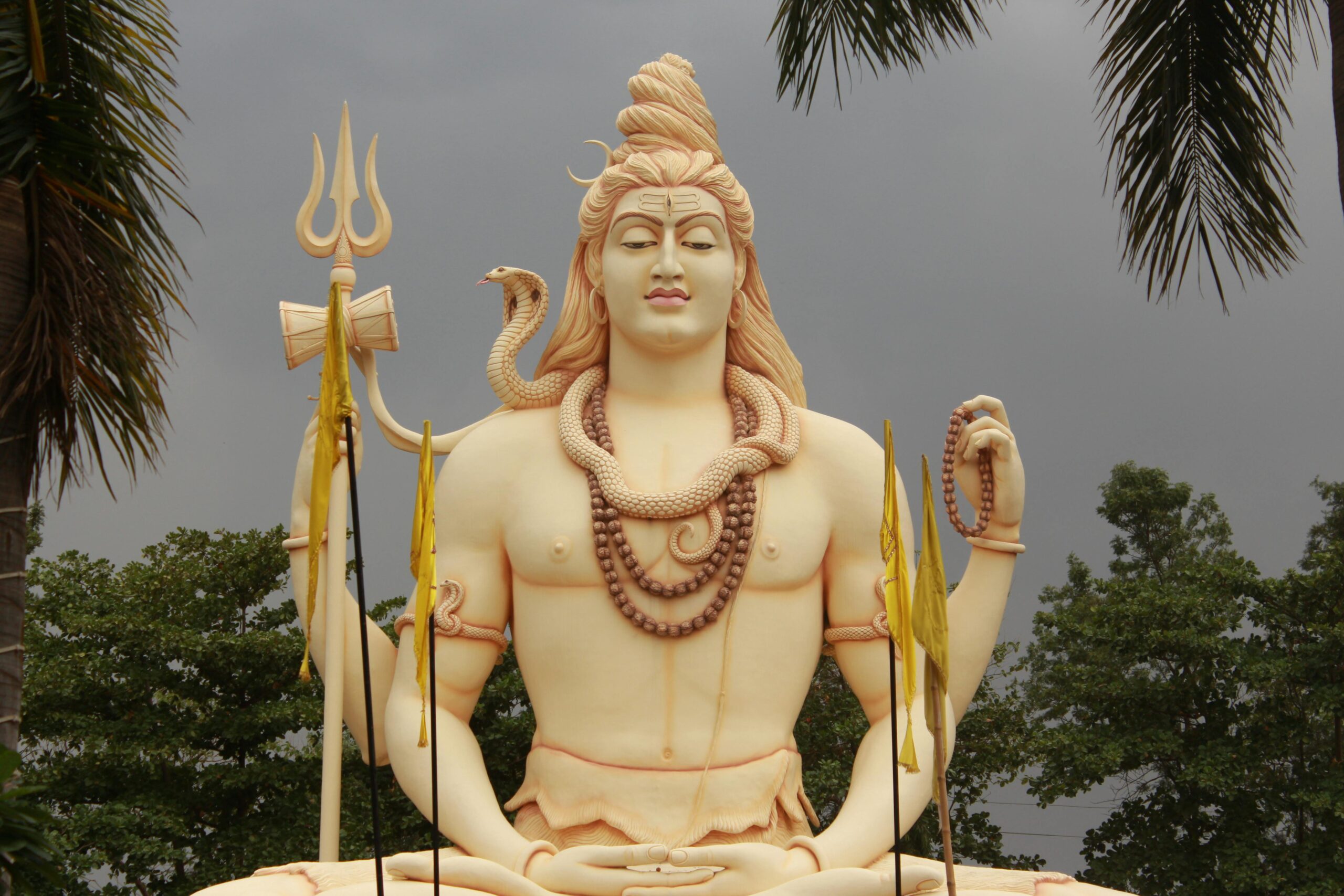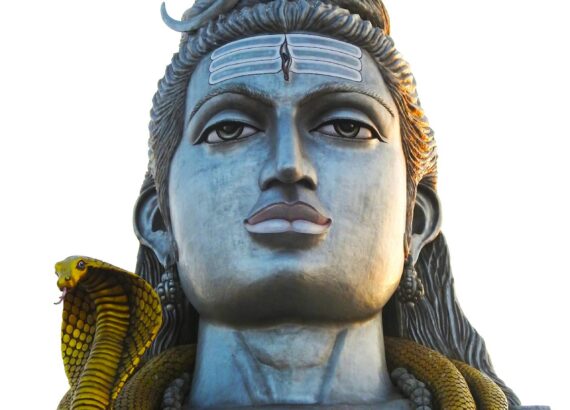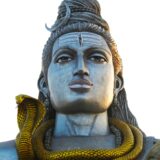Who is Lord Shiva?

Who is Lord Shiva? The question is often asked and we get answers too in plenty. But it remains mysterious and we seek more. So today you will explore some of the unexplored facts related to Lord Shiva. Welcome to a journey through the depths of Hindu mythology and spirituality as we embark on an exploration of the enigmatic deity, Lord Shiva. In the vast pantheon of Hindu gods, Shiva stands out as a figure of unparalleled complexity and significance.
Today, we invite you to immerse yourself in an in-depth article that delves into the multifaceted persona, rich mythology, and profound symbolism surrounding Lord Shiva. From his origins as the Supreme Being to his role as the destroyer and transformer of the universe, we will unravel the layers of Shiva’s mythology, iconography, worship, and philosophical significance, offering insights into his timeless allure and enduring relevance in the tapestry of Hindu spirituality.
Who is Lord Shiva?
Lord Shiva, one of the principal deities in Hinduism, embodies paradoxes and complexities that make him a figure of profound significance and intrigue. Revered as the Supreme Being, the Destroyer, the Transformer, and the Supreme Yogi, Shiva’s multifaceted persona captivates devotees and scholars alike.
Origins of Lord Shiva and Iconography
Lord Shiva’s origins are steeped in ancient mythology, where he is often depicted as the progenitor of the universe, existing before creation itself. His iconic representation as the Nataraja, the cosmic dancer, symbolizes the rhythm of creation, preservation, and destruction that governs the universe. Adorned with a crescent moon on his matted locks, a serpent coiled around his neck, and the sacred river Ganges flowing from his locks, Shiva’s iconography is laden with symbolism reflecting his role as both creator and destroyer.
The Trinity and Divine Consort
In Hindu cosmology, Lord Shiva forms the Trimurti, the triumvirate of major deities alongside Brahma, the creator, and Vishnu, the preserver. While Brahma creates the universe and Vishnu sustains it, Shiva’s role as the destroyer is essential for renewal and regeneration. Shiva’s divine consort, Parvati, symbolizes the creative aspect of the universe, complementing his destructive powers with her nurturing and generative energy.
Mythological Epics and Legends:
The Hindu scriptures abound with tales of Shiva’s exploits, showcasing his benevolent and wrathful aspects. From his role in the churning of the cosmic ocean to retrieve the elixir of immortality (amrita) to his marriage to Parvati and their divine offspring, such as Ganesha and Kartikeya, Shiva’s mythology is replete with symbolism and moral lessons. Legends like the destruction of Tripura and the taming of the Ganges further illustrate his power and compassion.
Yogic and Ascetic Attributes
Lord Shiva is revered as the Adiyogi, the first yogi who transmitted the science of yoga to humanity. His ascetic lifestyle, characterized by meditation in remote Himalayan caves and cremation grounds, exemplifies detachment from worldly attachments and the pursuit of spiritual enlightenment. The symbolism of his third eye, which when opened unleashes destructive fire, signifies the power of inner perception and transcendence.
Worship and Festivals
Devotees across the Indian subcontinent and beyond venerate Lord Shiva through elaborate rituals, ceremonies, and festivals. Maha Shivaratri, the Great Night of Shiva, is celebrated with fervor, marked by fasting, prayer, and night-long vigils. Temples dedicated to Shiva, such as the iconic Kashi Vishwanath Temple in Varanasi and the sacred shrines of Pashupatinath in Nepal, attract millions of pilgrims seeking blessings and liberation.
Philosophical Significance:
Beyond his mythological and religious dimensions, Lord Shiva embodies profound philosophical concepts within Hinduism. As the destroyer of ignorance and illusion (maya), Shiva represents the ultimate reality (Brahman) that transcends the cycle of birth and death (samsara). His cosmic dance, the Tandava, symbolizes the eternal rhythm of creation and dissolution, echoing the impermanence of all existence.
How is Lord Shiva relevant today?
In today’s fast-paced and interconnected world, the timeless wisdom of Lord Shiva continues to offer profound insights and guidance for navigating the complexities of modern life. Shiva, often revered as the Supreme Yogi, exemplifies the importance of inner peace, mindfulness, and self-awareness in an age marked by stress and distraction.
The practice of meditation, central to Shiva’s teachings, has gained widespread recognition in contemporary society as a powerful tool for reducing anxiety, improving mental health, and enhancing overall well-being. As countless individuals across the globe embrace mindfulness practices inspired by Shiva’s legacy, they discover a pathway to inner transformation and spiritual fulfillment.
Moreover, Shiva’s role as the destroyer and transformer holds relevance in addressing pressing global issues such as environmental degradation and social injustice. Just as Shiva’s destructive aspect paves the way for renewal and regeneration in the cosmic cycle, humanity is called upon to confront the destructive forces of greed, exploitation, and unsustainable practices to usher in a more harmonious and sustainable future.
The symbolism of Shiva’s third eye, representing inner vision and higher consciousness, serves as a poignant reminder of the importance of discernment and clarity in navigating the complexities of the modern world. In an era marked by misinformation and superficiality, Shiva’s teachings inspire individuals to cultivate a deeper understanding of themselves and the world around them, empowering them to make informed choices and contribute positively to society.
In essence, the contemporary relevance of Lord Shiva lies not only in his ancient mythology and rituals but also in his timeless wisdom and universal truths that continue to guide and inspire seekers on the path to self-realization and enlightenment in the 21st century
A 360-degree overview
Lord Shiva, with his enigmatic persona and timeless symbolism, continues to inspire devotion, contemplation, and scholarly inquiry. As the embodiment of divine paradoxes and cosmic forces, Shiva transcends conventional dualities, inviting seekers to explore the depths of consciousness and the mysteries of existence.
As the embodiment of paradoxes and cosmic forces, Shiva invites seekers to explore the intricacies of existence, to transcend the limitations of the material world, and to embrace the essence of divine consciousness. In venerating Shiva, devotees find solace, inspiration, and a pathway to inner transformation, echoing the eternal dance of creation, preservation, and dissolution that defines the essence of existence itself. Thus, in the ever-turning wheel of time, the enigmatic presence of Lord Shiva endures as a guiding light, illuminating the path to spiritual awakening and ultimate liberation.
(The content of this article is for informational purpose only. Read DISCLAIMER for more…







